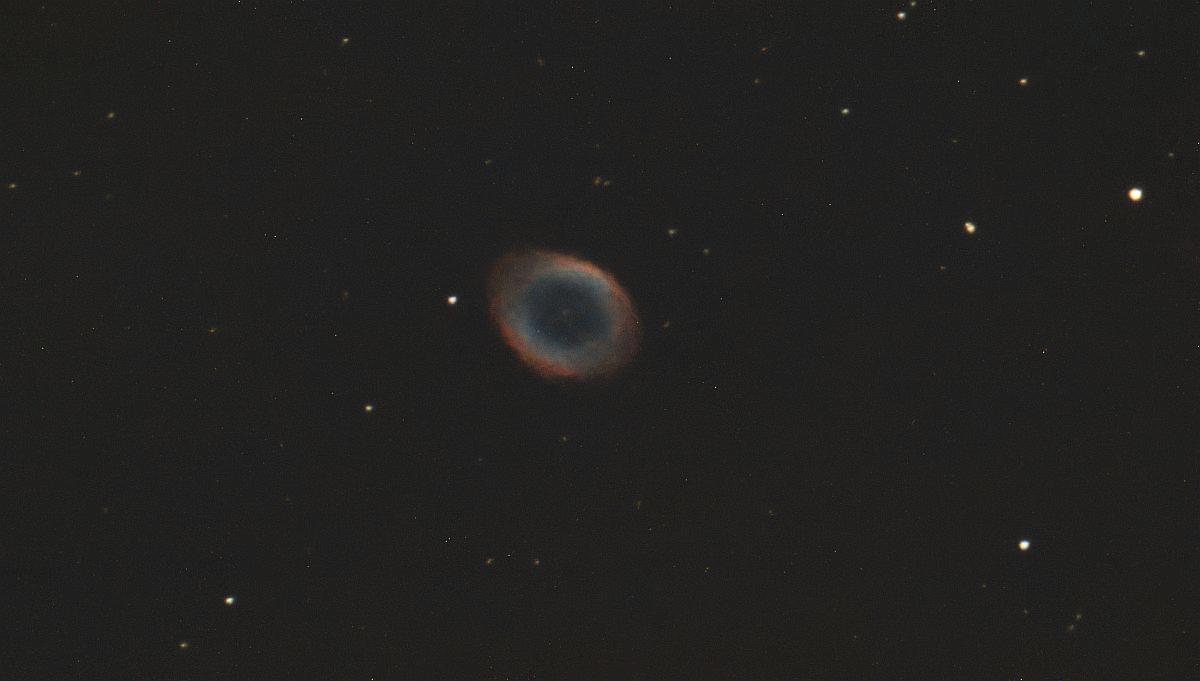I simply wanted to know, how the QHY5III715C planetary camera would function if used for some bright deepsky object. And the M57 Ring nebula is bright, indeed.
I got it, but I am not so really convinced, that it work good.
| Today's Conditions |
: | Clear sky, Temp +13°C ~ +16°C, ~70% humidity, very clear, good mediocre seeing, no wind. |
 |
M57 Ring Nebula with Planetary Camera experiment |
| Date - Time : 19 May 2025 - from 2144 UT+ |
| Image Data: Camera=QHY5III715C | ROI=Full Frame 3864x2192 | Filter=built-in IR Cut | 60 images à 15 sec | Gain=98 | Offset=30 Intes MK67 150/1800mm (no Projection) |
Equipment
Optics : Omegon Pro APO Triplet ED FCD-100 d=85 f=510mm Apochromat (f=1/6) : Intes MK-67 Maksutov Type Reflector d=150mm f=1800mm (f=1/12) Camera : Omegon veTec 533 C Colour CMOS Camera with IMX533 square 9MP sensor 3,75µm pixels : QHY 5III715C Colour CMOS IMX715 8,2MP sensor 1,45um pixels high speed : NIKON D7000 DSLR unmodified (from 2011) : The Imaging Source DMK21AU4.AS monochrome USB highspeed camera : Panasonic LUMIX G110 MFT System (from 2021) Filter : IR/UV Cut, Astronomik H-Alpha, Astronomik LRGB set + filter drawer add. optics : ED 2x Barlow lens, eyepiece projection : 35mm, 50mm, 135mm and 200mm NIKON lenses available : 2.8/60mm Sigma, 12 .. 60mm Leica for MFT system Mount : VIXEN GP Highspeed Step Motors (Non Vixen Motors) Controller : EQStar Pro (System from Astro Gadget / Ukraine - since May 2023) Focusing : EAF (Electronic AutoFocus) Gemini (?China) on APO Guiding : PHD2 Aquisition : DELL Notebooks (Windows 10 & Windows 11), SharpCap, FireCapture and others Image Processing : DeepSkyStacker, Siril, Gimp and others latest list update : May 2025